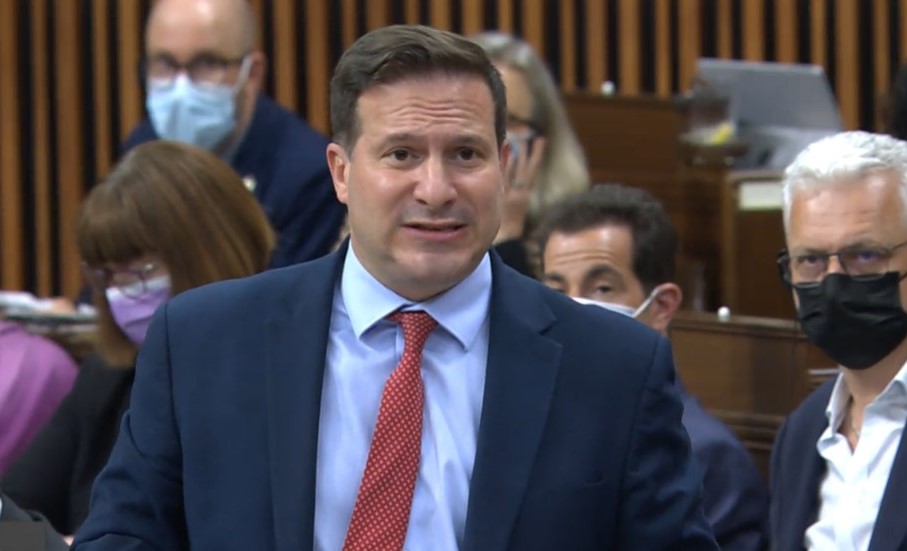
Public Safety Minister Marco Mendicino rises during Question Period in the House of Commons on Parliament Hill in Ottawa on June 16, 2022. (Screenshot from ParlVu)
The Liberal government’s plan to tighten firearms legislation by putting a freeze on handguns is backed by limited data on the potential impact this measure will have on reducing crime, the Commons public safety committee heard on Oct. 4.
“I can’t tell you exactly what impact it will have,” Assistant Deputy Minister of Public Safety Talal Dakalbab told the committee.
Dakalbab was responding to a question from Conservative MP Dane Lloyd.
“I think Canadians would want to know that the department has done a study that the outcomes will lead to enhanced public safety,” said Lloyd.
“Does the department have such a study or analysis that indicates these programs will increase public safety?”
While indicating no study has been conducted, Dakalbab shared some of the data available to his department regarding the increase in handgun ownership in the country.
He said handgun ownership has increased by 50 percent over the past 10 years and his department has seen an increase in the reporting of stolen handguns.
Dakalbab said that freezing the transfer of handguns is not only to address gang violence, but also domestic violence and suicides.
“We do have data about how committing or attempting to commit suicide with a gun increases significantly” lethal outcomes.
The Liberals seek to address rising gun violence in the country through Bill C-21, which will freeze the transfer of handguns. The bill has passed second reading in the House of Commons in June.
As a temporary measure before the bill becomes law, the government imposed an importation ban on handguns in mid-August.
Bill C-21 also includes “red flag” provisions to confiscate firearms from individuals considered a danger to themselves and others and increases penalties for some weapons offences.
At the same time the Liberals want to pass Bill C-5 to remove mandatory minimum sentences on some firearms offences to serve as an “anti-racism” measure to address the overrepresentation of indigenous and black adults in prison.
Mendicino Testifies
Public Safety Minister Marco Mendicino also attended the committee meeting and was asked whether a study had been commissioned on the separate issue of the “assault-style” firearms federal buyback program. He did not answer the question directly.
“You’re about to embark on a program that could reach into the billions of dollars. Have you or your department commissioned any studies that demonstrates that this buyback plan is an effective use of taxpayer dollars to enhance public safety?” asked Lloyd.
“I’ve spoken with the victims,” replied Mendicino before being cut off.
“Have you commissioned a study that proves this?” said Lloyd.
“Of course we’re studying the costing very carefully, studying it currently,” replied Mendicino, addressing the cost of the program but not its purported effectiveness.
Last year, the Parliamentary Budget Officer estimated the buyback price tag at over $750 million without administrative costs.
Lloyd raised an engagement paper prepared by Mendicino’s department in 2018 titled “Reducing Violent Crime: A Dialogue on Handguns and Assault Weapons.”
He quoted a sentence from it which says that “In all cases the data does not conclusively demonstrate that these handgun or assault weapon bans have led to reductions in gun violence.”
The paper cites the examples of handgun policies in Australia and the UK, as well as the U.S. ban on “assault weapons” that expired in 2004.
Some provinces have recently said they would not cooperate with the buyback, which they call “confiscation.”
Alberta announced on Sept. 26 it would not cooperate with the federal buyback program and asked the RCMP in the province to follow suit.
Saskatchewan and Manitoba have since joined Alberta, citing that the program targets law-abiding citizens and police resources should be directed at criminals.
